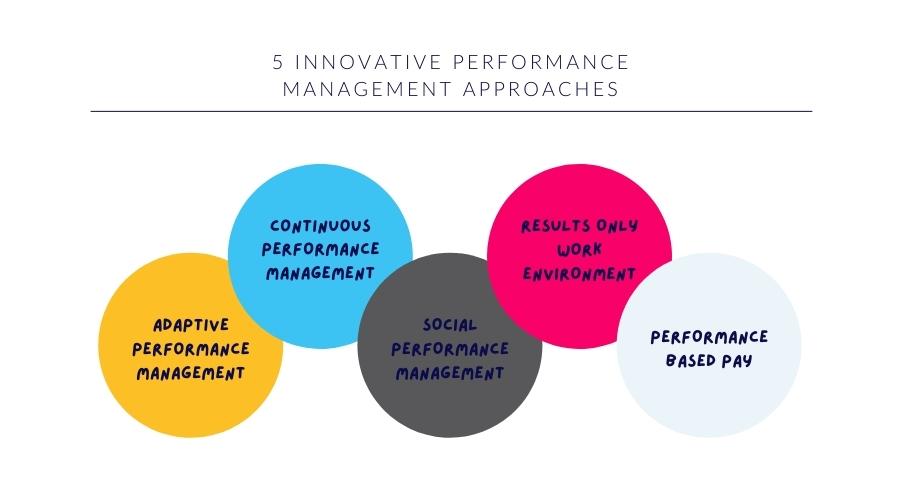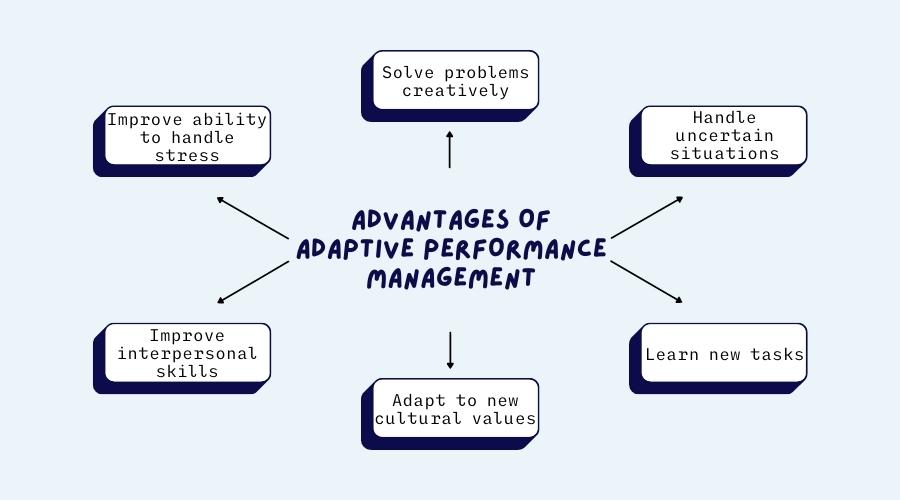As businesses adapt to a post-pandemic world, innovative performance management approaches help shape the new workplace.
With an effective performance management model, you can achieve your targets, while ensuring lower employee turnovers.
Read on to find out what performance management approaches you can adopt to help motivate higher productivity and better engage employees.
To win in the marketplace you must first win in the workplace.
Douglas Conant, former CEO of the Campbell Soup Company
Performance management approaches have undergone significant change over the last two years. As a result of work-from-home directives and the rise of remote working, the way we work has changed. This has created challenges to building a culture that expands beyond the company’s walls and manages performance in a new reality.
A survey from Microsoft revealed that over 40% of the global workforce were considering leaving their employer in 2021. A range of new work trends were also highlighted, set to change the shape of performance management for years to come.
These changes include:
- Flexible work will be here for a long time to come
- Leaders are out of touch with employees
- Gen Z will need to be re-energized
- Shrinking networks are damaging innovation
- High productivity is masking an exhausted workforce
- A renewed authenticity will enhance productivity and wellbeing
These changes require new approaches to how business leaders think about performance management. Managing hybrid work will require a more thoughtful approach if it is to attract and retain the top talent.

The five performance management approaches outlined below are designed to help organisations manage performance in a way that addresses the core challenges of our time.
These performance management approaches are:
- Adaptive performance management
- Continuous performance management
- Social performance management
- Results-only work environment
- Performance-based pay
Additional Read: Incorporate Better Performance Management
While not all approaches might be suitable for your business, with an effective performance model, you can hit all of your targets. Some combination of these strategies may also be appropriate in certain circumstances.
Let’s explore these approaches in more detail.
1. Adaptive Performance Management

Adaptive performance management helps employees adapt to any changes in their work environment. By using real-time data and ongoing feedback, employees can adjust their performance on the fly.
This performance management process is particularly useful for employees who work in a fast-paced environment. It gives them the flexibility necessary to respond to changes as and when they occur.
Adaptive performance management offers a number of advantages for employees. It can help them to:
- Solve problems creatively
- Handle uncertain situations
- Learn new tasks
- Adapt to new cultural values
- Improve interpersonal skills
- Improve their ability to handle stress and crises
This performance management approach is particularly suited to situations in which the organisation is experiencing disruptions. Employees who can quickly adapt to changes are more likely to excel and will display a positive attitude when doing so.
Performance management tools can provide the framework for an adaptive approach. These systems can be used to track performance metrics that directly illustrate an employee’s ability to adapt over time. By using a combination of self-reporting and 360-degree feedback, managers can track progress for:
- Crisis handling
- Fluid intelligence
- Openness
- Situational awareness
- Stress resilience
- Cultural adaptability
- Problem solving
With an adequate performance management model, the process can be streamlined. Improving these and other related strengths over time not only makes employees more adaptable to sudden change and stress. It also makes them more resilient overall to any challenges they face in the workplace.

2. Continuous Performance Management
Continuous performance management delivers regular feedback, addressing key performance issues before they become a problem. This approach also helps them to develop a broad set of skills over time. These can be directly related to their roles and responsibilities, or soft skills such as communication and leadership.
As the name implies, continuous performance management process touches on multiple aspects of an employee’s experience. As the article from Josh Bersin, Continuous Performance Management: Innovation Reigns, observes:
“This new market cycle has to embrace the ideas of continuous development, learning, and career growth too. Everyone has work goals, but they also have career goals, skills development goals, and developmental assignments to go after. This new element of performance management was always missing in the last generation.”
Performance management tools allow managers and employees to track each of these aspects of performance and react in real-time.
Objectives and Key Results Tracking
Objectives and key results can be used to track progress towards a broad range of goals. Setting goals can help improve employee performance by keeping them focused on what matters the most. Tracking these goals in real-time boosts engagement and delivers a clear view of development.
With a proper performance model, employers can set definite attainable goals. These goals can also be aligned with the broader aims of the organisation. By integrating these across existing systems, leaders can gain insights without the need for micro-management.
Dashboards
OKRs are just one aspect of an employee’s daily work experience. Meetings, coaching and training, and various other aspects all need to be managed. Using a dashboard allows employees to keep on top of the day’s priorities. They also make it simpler for managers and team leaders to monitor individuals, teams, and departments.
Additional Read: OKR Objective Software
One2one Check-ins
A continuous performance management process requires continuous conversations. One2one check-ins are the most effective way to keep these conversations going. They can be easily scheduled through performance management software to make sure no sessions are overlooked. By conducting one2one check-ins on a regular basis, managers and employees can keep on top of any performance-related issues which need to be addressed.
Data Analytics and Reporting
Performance management tools are a powerful way to collect large amounts of data covering a wide range of metrics. But this can sometimes be overwhelming. Using data analytics and reporting allows users to observe trends and monitor drops in performance. Additional insights can be gathered from HR, linking employee performance to attendance and absence.
3. Social Performance Management
Build it, and they will come” only works in the movies. Social Media is a “build it, nurture it, engage them, and they may come and stay.”
Seth Godin, former dot com business executive
Social performance management is an approach that adopts social media platforms to connect employees with their managers and peers. By creating social networks, it allows them to learn from one another on a daily basis, keeping up to date on performance goals and objectives.
Having a social performance management model can be particularly useful for Gen Z and Millennials in the workforce. These groups are already embedded in social media networks, and familiar with feedback systems such as likes and sharing.
Additional Read: Importance of Employee Feedback
Consider implementing one or more of the following strategies:
Create Work-related Groups on Social Media Platforms
If your employees are already using social media platforms such as Facebook, consider setting up work-related groups. The informal nature of social media platforms allows them to share thoughts and ideas more freely. They are also good spaces for employees to get to know one another on a personal level.
Make the Most of in-house Social Intranets and Forums
Social intranets and forums have been a part of the business world for decades. But not every company uses them to their full potential. When linked to performance management software, intranet posts can be received through an employee’s social feed.
Forums can also be used to give employees a space to brainstorm new ideas. These can be broken down into various topics or established based on teams and departments within the company.
Integrate Peer-to-Peer Rewards and Recognition
Social performance management is all about engagement. Using rewards and recognition helps employees feel valued for their work, whether from managers to peers or peer-to-peer. Integrating a rewards system into the daily workflow gives people lots of opportunities to celebrate their colleagues’ great work. This can be congratulating them for completing a project, or recognising when they have lived up to a company value.
Set Up Dedicated Channels Through Microsoft Teams
Microsoft Teams is a popular tool for internal communications which allows users to create dedicated channels for the topics of their choice. Some performance management software allows users to integrate Teams and create a smoother workflow. It’s another handy touchpoint for employees to share ideas, deliver constructive feedback, and learn new skills.
4. Results-Only Work Environment
A results-only work environment (ROWE) creates a workplace where results count the most, not the amount of time a given employee spends in the office. This approach is particularly useful for companies where employees are working remotely or telecommuting. In these circumstances, the concept of time spent at work is more difficult to measure.
The most hands-on performance management model covered in this article, a results-only work environment can deliver great results. The flexibility can be ideal for employees who are productive when left to their own devices.
The advantages of a results-only work environment include:
- Lower absence rates as a flexible schedule allows them to work around other commitments
- Less environmental harm, with fewer commutes and lower workplace energy expenses
- Decreased employee turnover due to higher employee satisfaction
- An increase in productivity as employees work when they’re more focused.
- Reduced employee stress and an overall improvement in wellbeing
5. Performance-Based Pay
Performance-based pay is an approach to employee performance that directly links pay to achievements. While this approach should not be used in isolation, in some circumstances it can help employees achieve specific goals.
Typically, performance-based pay is used in combination with other approaches to performance management. It functions as an extra incentive to complement performance management techniques that are implemented within the daily workflow.
The relationship between pay and performance is complicated, as a report from the Harvard Business Review highlights. Their article, How Incentive Pay Affects Employee Engagement, Satisfaction, and Trust, explains how bonuses and other payment compensation doesn’t always deliver the intended results:
“There are ways in which these methods of performance pay can backfire, causing contentious behaviours among employees, complaints about unfair pay distribution, or overwork and stress.”
As such, performance-based pay should not be used in isolation. When it is used, care should be taken to ensure the process is transparent and fair. The most successful performance management approaches understand that motivation runs deeper than financial rewards. For employees to fully succeed, intrinsic rewards should take priority.





